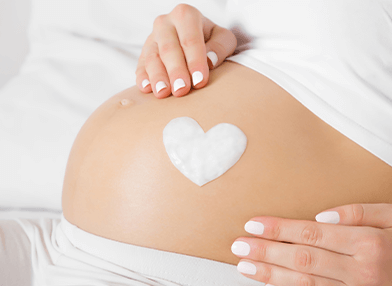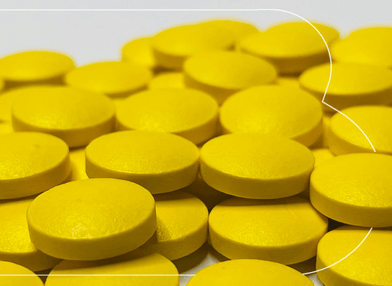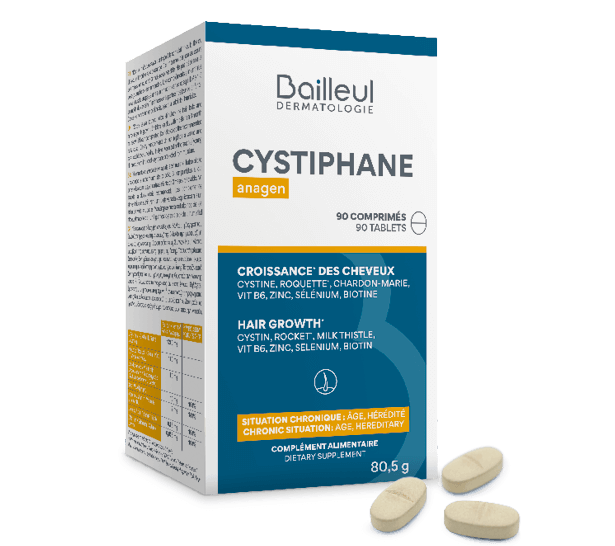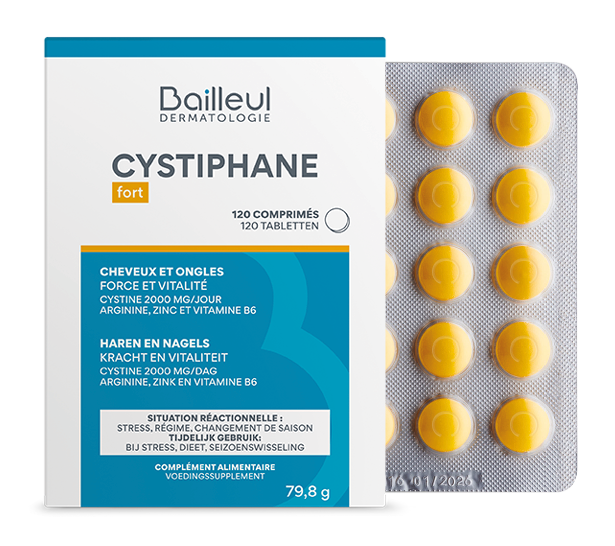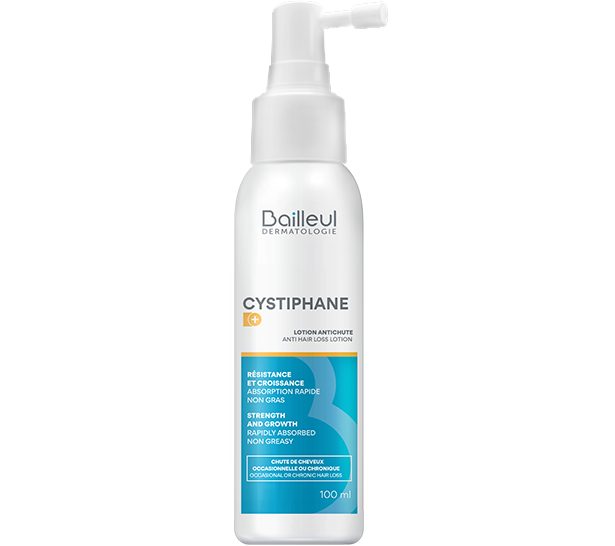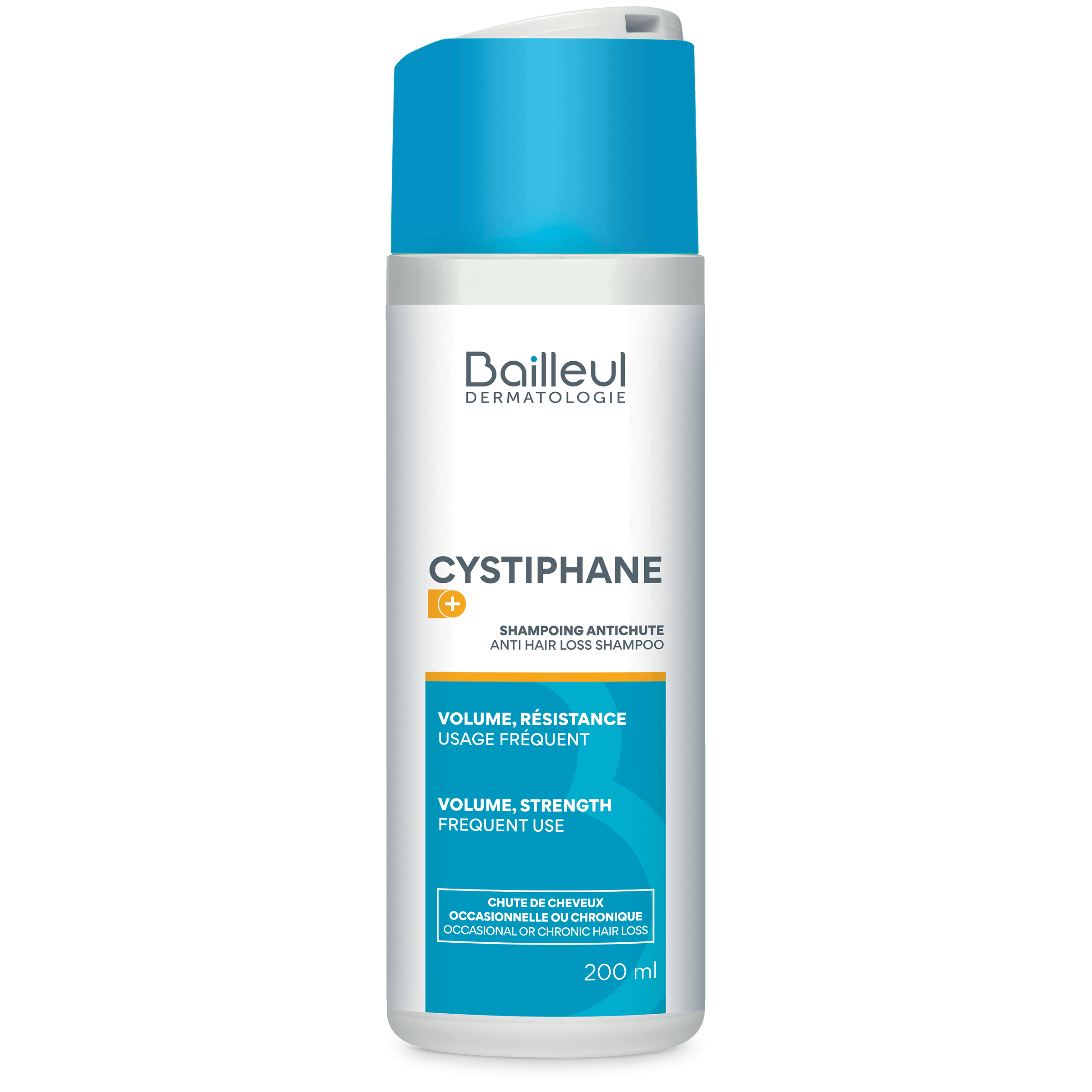Postpartum hair loss is a common type of reactive alopecia, affecting around 50% of new mothers(1). It usually begins two to three months after childbirth due to a major hormonal shift. During pregnancy, high estrogen levels extend the anagen phase of the hair cycle: hair remains in the growth phase, the hair looks fuller, and shedding is reduced. After giving birth, the drop in hormone levels (postpartum hormonal withdrawal) triggers a sudden entry into the telogen phase — the “shedding” phase — typically occurring two to three months postpartum. This diffuse hair loss across the entire scalp, while temporary, can appear alarming and be a source of concern(2).
Understanding Postpartum Hair Loss
Postpartum hair loss, also known as acute telogen effluvium, is primarily caused by the sudden drop in estrogen levels after childbirth.
This is a natural process linked to the hair growth cycle:
Outside of pregnancy, about 85% of hair strands are in the growth phase (anagen) and 15% in the shedding phase (telogen). During pregnancy, rising estrogen levels extend the anagen phase: hair sheds less, and the hair appears fuller and shinier.
After delivery, the hormonal drop causes a sudden shift of a large number of hairs into the telogen phase (sometimes up to 50% of the hair), leading to diffuse and often dramatic hair loss two to three months after birth.
While this phenomenon can be alarming, it is temporary. Hair gradually starts to regrow, and the hair cycle typically returns to balance within a few months(3).
Hair shedding can be worsened by additional factors such as fatigue, stress, nutritional deficiencies, or even breastfeeding. While breastfeeding helps maintain more stable hormone levels, it does not prevent hair loss. The main cause remains the hormonal withdrawal, which—although slightly softened during breastfeeding—still occurs and may even be more pronounced in some women as the telogen phase naturally resumes.
For some new mothers, this sudden and noticeable hair loss can feel alarming. Fortunately, it is usually reversible, and hair regrowth begins as the hair growth cycle returns to normal. However, if there are mineral deficiencies or hormonal imbalances, they can prolong shedding and weaken the hair follicles(2).
Aggravating Factors of Postpartum Hair Loss
In addition to the hormonal drop, several factors can worsen postpartum hair loss(2):
-
Fatigue and stress: Lack of sleep and sudden lifestyle changes can intensify hair shedding.
-
Nutritional deficiencies: A diet low in iron, zinc, vitamin D, and B-complex vitamins weakens the hair fiber.
-
Rapid weight loss: A restrictive post-pregnancy diet can deprive hair of the essential nutrients needed for growth.
-
Breastfeeding: While breastfeeding may delay shedding, it also increases nutritional needs. A balanced diet is essential to reduce its impact on hair health.
How Long Does Hair Loss Last After Giving Birth?
When does postpartum hair loss stop?
It’s a question many new moms ask! The good news is that postpartum hair loss is usually temporary. Typically, the shedding phase lasts for about six months, with hair returning to normal within 9 to 15 months(4). However, when postpartum hair loss is linked to breastfeeding, the shedding may be less intense but can last longer.
If hair loss continues beyond six months, it is recommended to consult a dermatologist to rule out underlying causes such as persistent deficiencies or thyroid disorders.
Solutions to Prevent and Treat Postpartum Hair Loss
Although postpartum hair loss is a natural occurrence, it’s possible to reduce its impact and promote regrowth with proper care.
Here are a few tips to support healthy hair:
-
1. Optimize your nutrition: A diet rich in iron, vitamin D, omega-3, and zinc encourages healthy regrowth. If deficiencies are present, dietary supplements like the CYSTIPHANE range can help support hair vitality. One key nutrient is cystine, a sulfur-containing amino acid and essential component of keratin. Studies show that high doses of cystine significantly increase follicle growth rate and hair fiber thickness.
-
2. Adopt a gentle hair care routine: Use mild shampoos and strengthening lotions such as CYSTIPHANE Anti-Hair Loss Shampoo to fortify and protect hair from breakage. Regular scalp massage helps stimulate blood circulation and improve nutrient delivery to hair follicles.
-
3. Manage stress and promote rest: Quality sleep and relaxation techniques (like yoga or meditation) help regulate hormone levels. For high stress levels, adaptogenic herbs such as rhodiola or ashwagandha may be beneficial.
FAQ
"Are there ways to prevent hair loss before, during, and after pregnancy?"
A diet rich in vitamins and minerals, good hydration, and adequate rest already help limit the effects of postpartum hair loss. Regular medical check-ups are also recommended. Scalp massage, which boosts blood circulation and promotes hair growth, can be added to a hair routine enriched with cystine. The idea? Use gentle, circular motions without rubbing, ideally with nourishing plant oils like castor oil, combined with anti-hair loss essential oils (such as Atlas cedar, true lavender, or rosemary) — while ensuring they are safe for breastfeeding.
"When should I start taking vitamins for hair regrowth?"
The best time to start a vitamin and mineral supplement is shortly after childbirth, with medical guidance. Many women begin to notice hair loss around 3 months postpartum. A 1-to-3-month supplement course is usually sufficient. Alternatively, you can wait a bit to confirm it’s truly postpartum hair loss — which is temporary — or get a blood test for a more personalized prescription if a deficiency is suspected.
"What can I do if hair loss persists?"
If shedding continues for more than six months, consult a dermatologist to check for underlying causes such as nutrient deficiencies or hormonal imbalances. A blood test can help identify your specific needs.
References
(1) Grover C, Khurana A. Telogen effluvium. Indian J Dermatol Venereol Leprol. 2013 Sep-Oct;79(5):591-603. doi: 10.4103/0378-6323.116731. PMID: 23974577.
(2) Asghar F, Shamim N, Farooque U, Sheikh H, Aqeel R. Telogen Effluvium: A Review of the Literature. Cureus. 2020 May 27;12(5):e8320. doi: 10.7759/cureus.8320. PMID: 32607303; PMCID: PMC7320655.
(3) Gizlenti S, Ekmekci TR. The changes in the hair cycle during gestation and the post-partum period. J Eur Acad Dermatol Venereol. 2014 Jul;28(7):878-81. doi: 10.1111/jdv.12188. Epub 2013 May 20. PMID: 23682615.
(4) Anzelc MJ, Bechtel MA. Considerations for cutaneous physiologic changes of pregnancy that fail to resolve postpartum. Int J Dermatol. 2023 Feb;62(2):190-196. doi: 10.1111/ijd.16105. Epub 2022 Feb 7. PMID: 35132624.


 (1).png)
.png)
